Abstract
Purpose
Compared with radical retropubic prostatectomy (RRP), laparo-scopic surgery significantly reduces postoperative discomfort, the length of the hospital stay and the length of the convalescent period. However, the procedure of laparoscopic radical prostatectomy (LRP) is difficult to master. Therefore, we considered the surgical technique that is minimally invasive like LRP and it does not require a considerable learning curve and brings good results, like conventional RRP.
Materials and Methods
From January to May 2006 at our institution, we performed LaMRRP on 7 patients who were diagnosed with clinically localized prostate cancer. Under general anesthesia, a 5cm midline incision was made suprapubically and a 10mm trocar is introduced extraperi-toneally at the umbilicus for the camera. The assistant port consisted of a 5mm trocar that was placed for blood suction and for vesicourethral anastomosis. We performed the operation under direct vision through the small window and using a video monitor. The surgical procedures followed the steps employed in conventional RRP.
Results
We successfully performed the operation in all cases without any extension of the incision. The mean patient age is 68.4 years old (range: 59–75). The mean operating time was 320 min (range: 290–360). The mean blood loss was 1,380ml (range: 1,150–1,800). There were no major complications. The postoperative pain was noticeably reduced compared with conventional RRP. The urethral catheter was left in place for 18 days (range: 14–25) in all the patients and postoperative cystography showed no leakage.
Conclusions
We could perform LaMRRP with using enhanced surgical views, and there was no long learning curve and no additional expense. The results of LaMRRP were not significantly different from that of conventional RRP. Therefore, LaMRRP could be a useful method for the treatment of localized prostate cancer.
References
1. Jemal A, Murray T, Ward E, Samuels A, Tiwari RC, Ghafoor A, et al. Cancer statistics, 2005. CA Cancer J Clin. 2005; 55:10–30.

2. Potosky AL, Davis WW, Hoffman RM, Stanford JL, Stephenson RA, Penson DF, et al. Five-year outcomes after prostatectomy or radiotherapy for prostate cancer: the prostate cancer outcomes study. J Natl Cancer Inst. 2004; 96:1358–67.

3. Guillonneau B, Vallancien G. Laparoscopic radical prostatectomy: the Montsouris experience. J Urol. 2000; 163:418–22.

4. Marshall FF, Chan D, Partin AW, Gurganus R, Hortopan SC. Minilaparotomy radical retropubic prostatectomy technique and results. J Urol. 1998; 160:2440–5.
5. Kageyama Y, Kihara K, Kobayashi T, Kawakami S, Fujil Y, Masuda H, et al. Portless endoscopic adrenalectomy via a single minimal incision using a retroperitoneal approach: experience with initial 30 cases. Int J Urol. 2004; 11:693–9.

6. Kihara K, Kageyama Y, Yano M, Kobayashi T, Kawakami S, Fujii Y, et al. Portless endoscopic radical nephrectomy via a single minimum incision in 80 patients. Int J Urol. 2004; 11:714–20.

7. Yang SC, Rha KH, Byun YJ, Kim WY. Video-assisted minilaparotomy in urology. J Endourol. 2003; 17:465–7.

8. Chung KJ, Choi HY. The comparison of minilaparotomy to laparoscopic surgery as staging pelvic lymphadenectomy in prostate cancer. Korean J Urol. 2004; 45:1008–13.
9. Park SK, Sakoda LC, Kang D, Chokkalingam AP, Lee E, Shin HR, et al. Rising prostate cancer rates in South Korea. Prostate. 2006; 66:1285–91.

10. Tarone RE, Chu KC, Brawley OW. Implications of stage-specific survival rates in assessing recent declines in prostate cancer mortality rates. Epidemiology. 2000; 11:167–70.

11. Parker SL, Tong T, Bolden S, Wingo PA. Cancer statistics, 1997. CA Cancer J Clin. 1997; 47:5–27.

13. Reiner WG, Walsh PC. An anatomical approach to the surgical management of the dorsal vein and Santorini's plexus during radical retropubic surgery. J Urol. 1979; 121:198–200.

14. Steineck G, Helgesen F, Adolfsson J, Dickman PW, Johansson JE, Norlen BJ, et al. Quality of life after radical prostatectomy or watchful waiting. N Engl J Med. 2002; 347:790–6.

15. Lee CH, Seo SI, Kim JC, Hwang TK. Laparoscopic radical prostatectomy. Korean J Urol. 2003; 44:617–23.
16. Bollens R, Vanden Bossche M, Roumeguere T, Damoun A, Ekane S, Hoffmann P, et al. Extraperitoneal laparoscopic radical prostatectomy. Results after 50 cases. Eur Urol. 2001; 40:65–9.

17. Menon M, Shrivastava A, Tewari A, Sarle R, Hemal A, Peabody JO, et al. Laparoscopic and robot assisted radical prostatectomy: establishment of a structured program and preliminary analysis of outcomes. J Urol. 2002; 168:945–9.

18. Steiner MS, Marshall FF. Minilaparotomy staging pelvic lymphadenectomy (minilap). Alternative to standard and laparoscopic pelvic lymphadenectomy. Urology. 1993; 41:201–6.

Fig. 1.
From the top, long blade retractor, Ko's penetrated T retractor, short curved blade retractor (anterior aspect) and short curved blade retractor (lateral aspect).
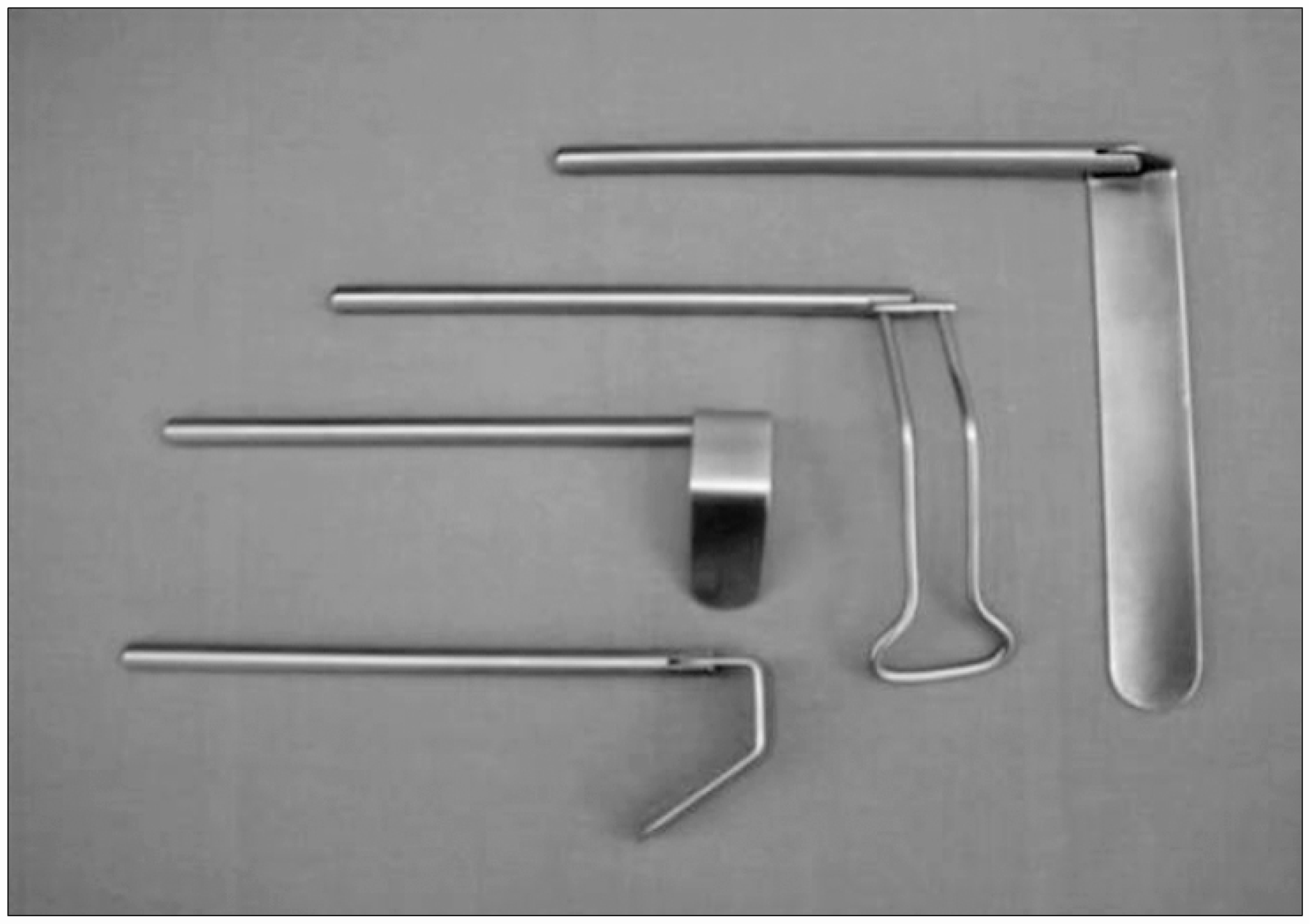
Fig. 2.
Positioning of retractor and the 0o laparoscope and creating at the a spacious cavity around the target specimen.
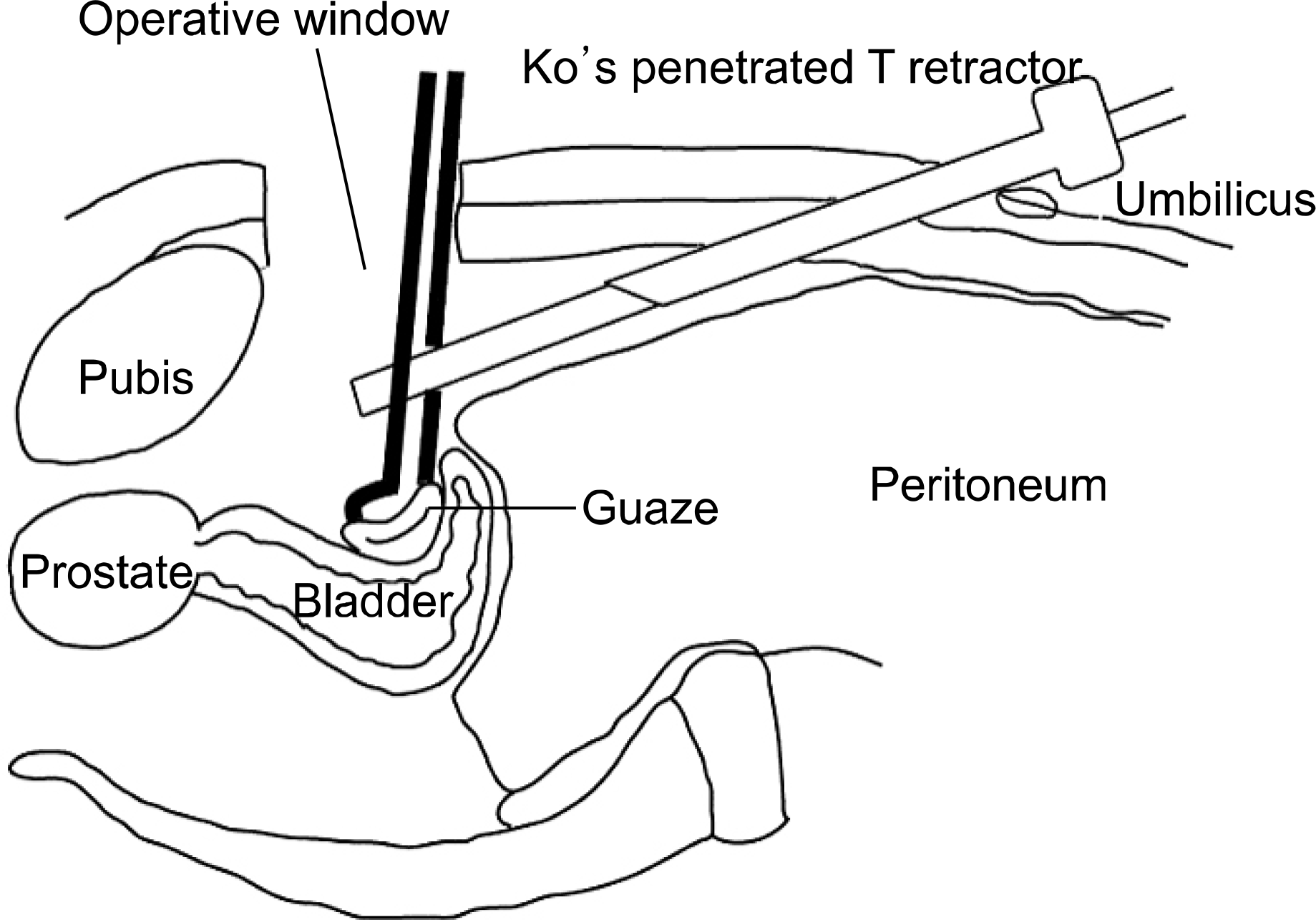
Fig. 3.
Vesico-urethral anastomosis. The operator is suturing at the 1 o'clock position of urethra with a laparoscopic needle holder through a 5mm port (arrow: 1 o'clock position of urethra).
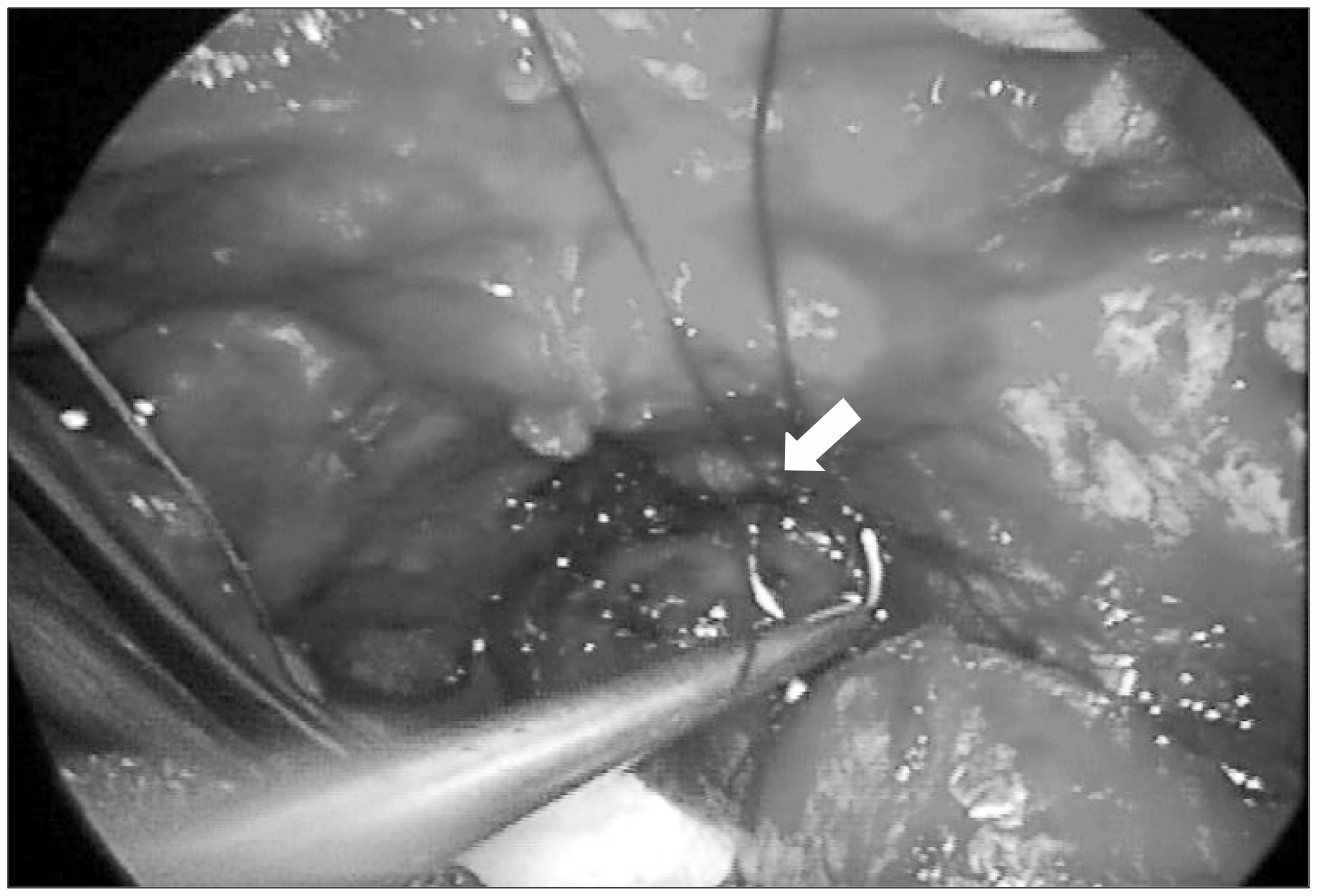
Table 1.
Characteristics of the patients who underwent LaMRRP and c RRP
Table 2.
Operative and postoperative characteristics of the LaMRRP and c RRP patients
| LaMRRP (range) | c RRP (range) | |
|---|---|---|
| Mean operative time (min)∗ | 320 (290–360) | 244 (220–320) |
| Mean EBL (ml) | 1,380 (1,150–1,800) | 1,400 (700–2,400) |
| Mean incision length (cm)∗ | 5 | 13.5 (12–15) |
| Mean catheter days | 18 (14–25) | 20 (16–24) |
| Mean admission days | 9.5 (9–11) | 11.4 (8–13) |
| Continence† | 7 (100%) | 8 (80%) |
| Positive surgical margin | 2 (25.5%) | 2 (20%) |
| Pathologic stage | ||
| T2a | 5 | 4 |
| T2b | 1 | 2 |
| T2c | 2 | |
| T3a | 1 | 2 |




 PDF
PDF ePub
ePub Citation
Citation Print
Print


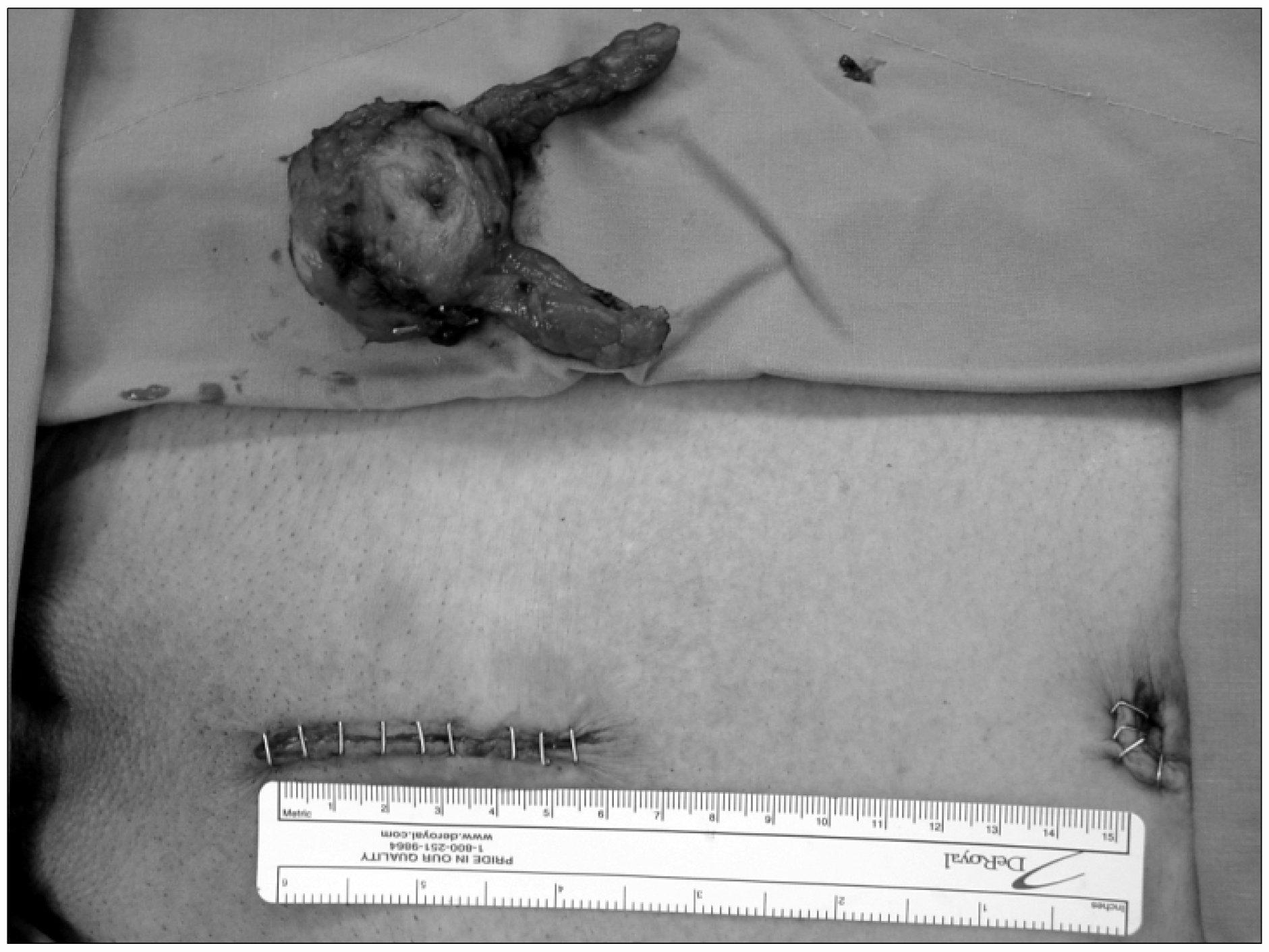
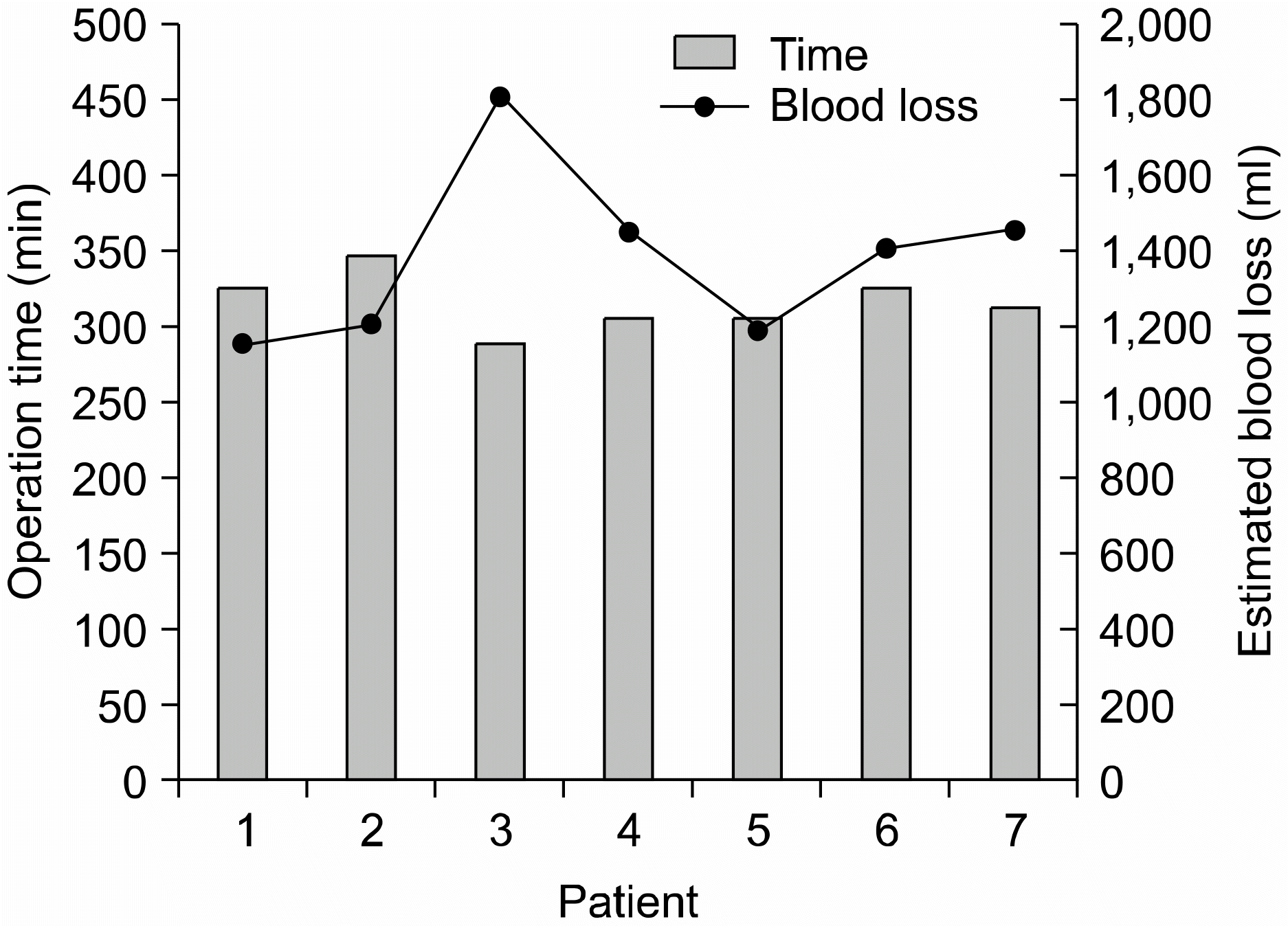
 XML Download
XML Download